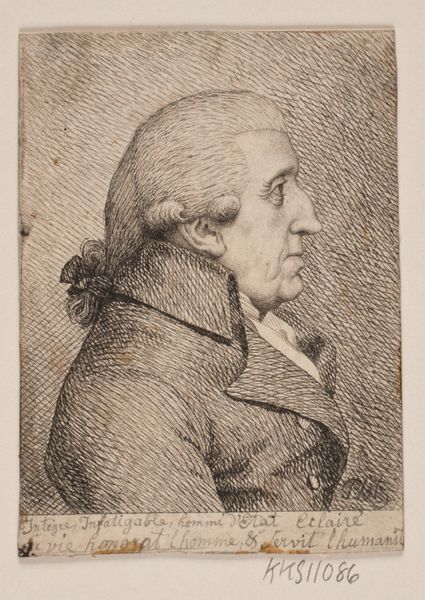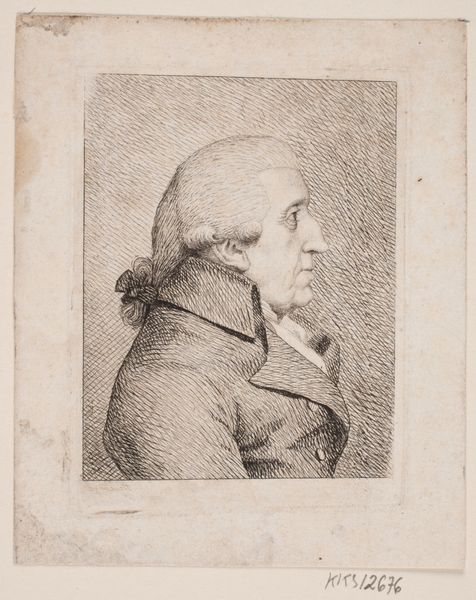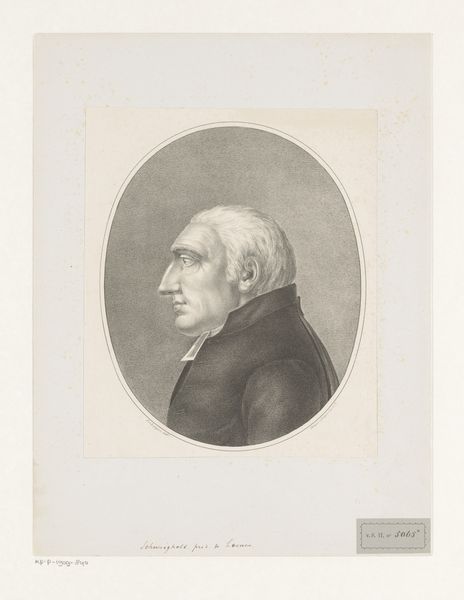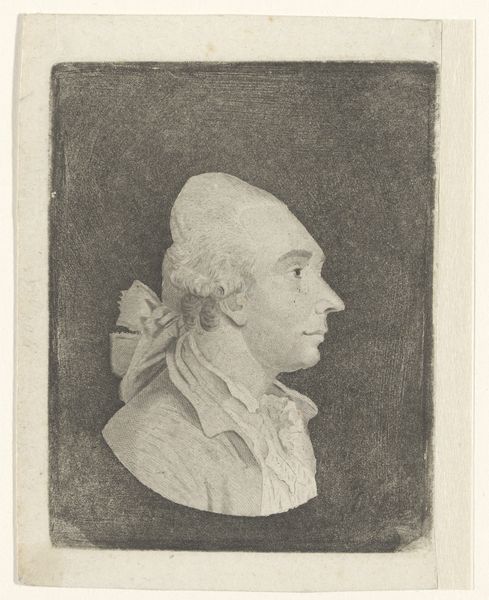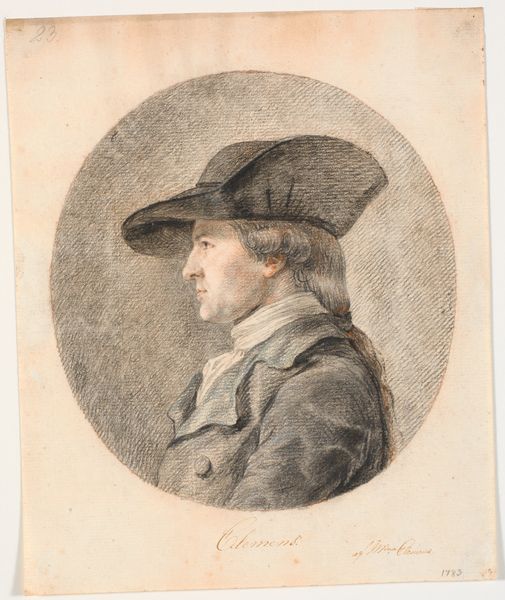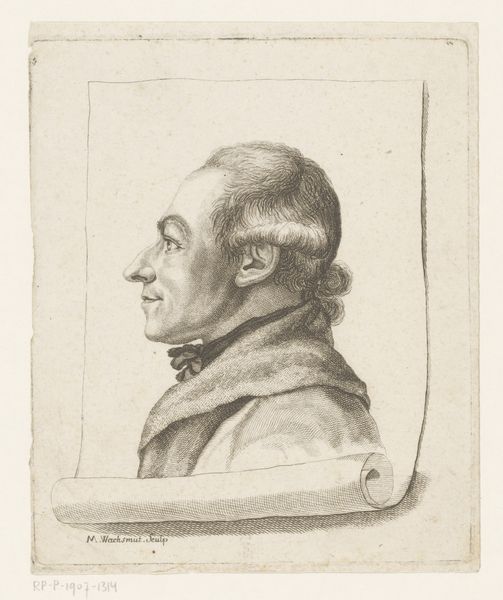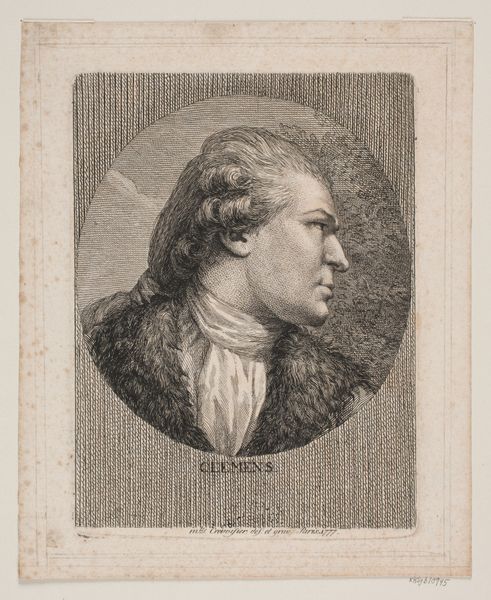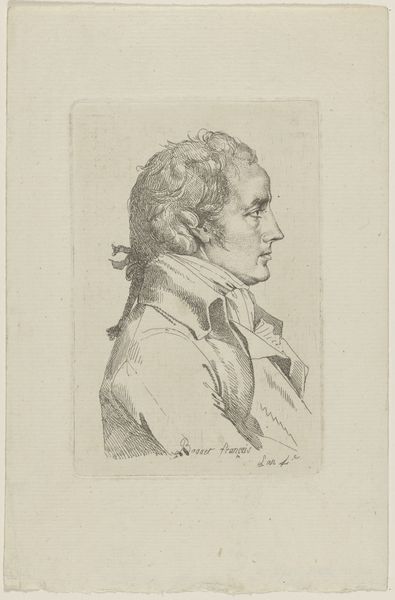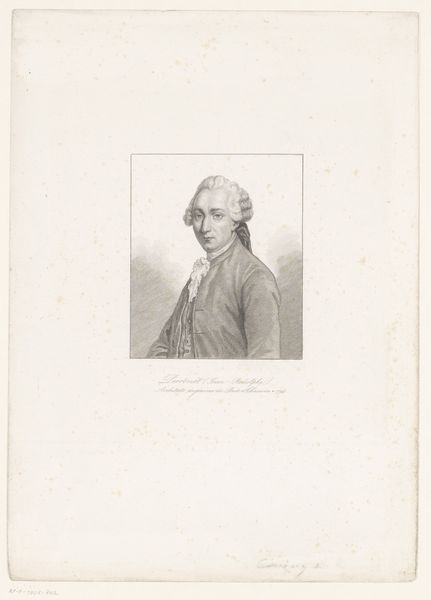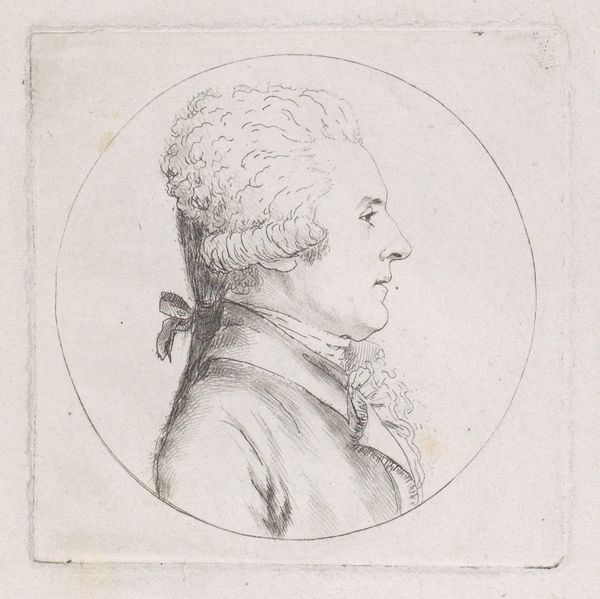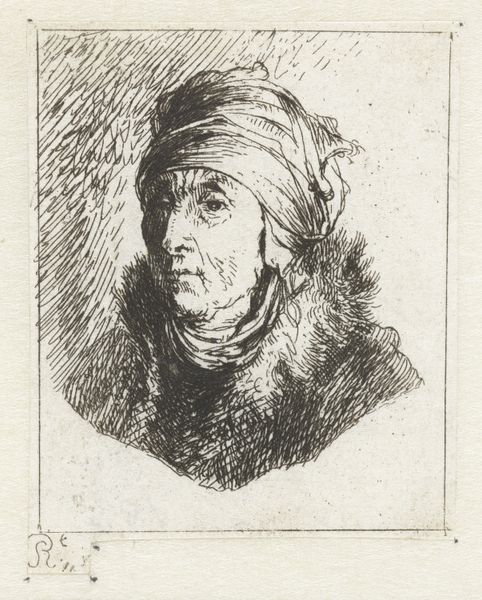
print, engraving
#
portrait
# print
#
engraving
Dimensions: 74 mm (height) x 56 mm (width) (plademaal)
Curator: Looking at this print, made using engraving, of Carl Wendt, dating back to sometime between 1786 and 1856… I immediately notice the meticulous detail achieved through this process. The dense network of lines creates form and depth. What are your initial impressions? Editor: The first thing that strikes me is the subject’s… remoteness. He seems a figure of the Enlightenment, certainly, with his powdered wig and formal attire, but also isolated. There's a certain… power dynamic suggested by the crisp detail in his face contrasted to the simple lined background. It raises questions about who was commissioned to make this work. Curator: Yes, it is intriguing. Engraving as a technique involved considerable skill and time; the engraver essentially carved the image into a metal plate to allow for prints. This suggests the image may have been reproduced quite widely, potentially for commercial or propagandistic means at the time. We may never know. Editor: Precisely. Think about the class dynamics. Wendt himself likely occupied a position of authority. But what of the engraver? Were they merely a technician, reproducing his image, or did they imbue the work with their own perspective? Whose perspective are we truly seeing? The hand that creates holds an extraordinary amount of power here. Curator: A very interesting line of inquiry. Let's consider how the very materiality impacts meaning, though. The rigid control necessary for precise engraving lent an air of formality and seriousness to the portrait. This engraving on a rigid metal plate allows for precision to an astonishing degree. We have to recognize this artistic production for its level of quality. The level of craft displayed by the engraver creates this character of significance. Editor: And I completely understand the importance of studying craft and the mastery behind the process! But that very process speaks to the complex social dynamics within 18th- and 19th-century societies. Power, status, and the means of representation are embedded in the materials and techniques. Who had access to which tools? Whose stories are considered valuable enough to etch into permanence? Curator: These questions prompt a continued analysis that transcends just one print; its influence at the time should also be looked at. The materiality of print allows for reproducibility. It's easy to gloss over. Editor: Indeed. Analyzing it offers us insight into historical systems of power, art making, and consumption. Thank you for walking me through this. Curator: Thank you for contributing these insightful questions! It enriched my experience as well.
Comments
No comments
Be the first to comment and join the conversation on the ultimate creative platform.
